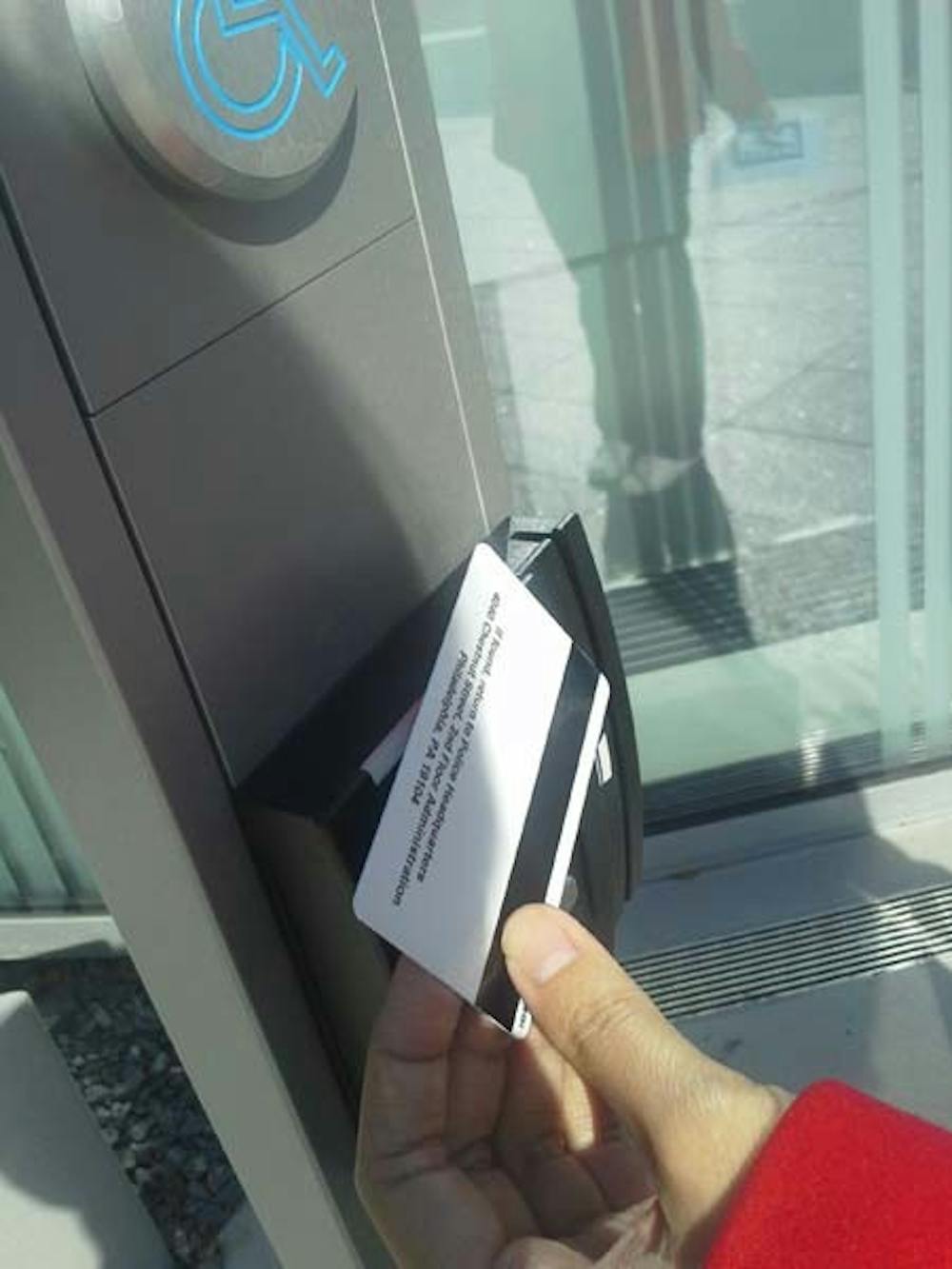
The contactless PennCard system is being implemented at the Singh Center for Nanotechnology.
Credit: Jing RanThe Singh Center for Nanotechnology is the latest building to feature the new contactless PennCard.
A joint effort by Information Systems & Computing, the Division of Public Safety and Business Services, piloting for contactless PennCards has already been launched in the newly renovated Gregory College House this fall.
Currently, the new PennCards have been issued to about 300 faculty, staff and students in the Singh building, allowing them to enter by simply tapping their cards on the readers. Each resident in Gregory has also received a separate access card in addition to their old PennCard to enter the college house. New PennCards with both functionalities will be issued to them in January.
Related: Singh Center for Nanotechnology to be collaboration hub
The new card uses Radio Frequency Identification technology, which is “more secure and is the technology of the future,” Susan Kennedy, senior IT director of Division of Business Services, said.
Chris Sapp, director of PennCard, said the RFID, as one of the best new technologies available, will eliminate the security flaw of magnetic strips.
“This technology is not widespread in the U.S. yet, and we are trying to keep ahead,” Barbara Lea-Kruger, director of communications and external relations of Division of Business Services, said. “We want to better position ourselves for the future so that we can use it when other partnering companies use it.”
Related: Gregory College House pilots swipeless security system
One such company is SEPTA, which asked to partner when it began looking into contactless technology for their plan to install an automated electronic fare payment system. “Around the same time, the new nanotechnology building was being built, so there’s an opportunity to build in more secure technology on door access and locks there,” Kennedy said.
Sapp said that the project is slated to take several years and the transition between the two technologies is supposed to be gradual. For the current version of the contactless card, magnetic strips still remain for purposes of dining swipes and ATM functionality.
Related: Operation Building Safe draws mixed reactions from students
“It’s a very big project, and it would be very hard to implement everything at once and do it successfully, so we’ll have a dual technology card and roll out one piece at a time,” he said.
Sapp describes their strategy of replacing as “attrition: when something is broken, they replace it with the new version.”
“One reason we chose [the Nanotechnology Center] is that it’s a new building and they can just put it in,” Lea-Kruger said. “As we renovate college houses, we’ll look to replace that — that’s why this is a long process. We want to wait until people want to replace things instead of replacing everything now.”
Related: DPS pilots program to secure building entrances
The new contactless card access has received positive comments from Gregory residents.
“I think the new access card is very easy to use and very convenient,” said Wharton sophomore Bill Ding, who has lived in Gregory for both of his years at Penn. “Compared to the traditional key, I think it is safer particularly when the residents lose the key. The access card would be discarded, but not with a traditional key.”
“We will assess the nano pilot feedback in the first quarter of next year,” Kennedy said. “If the recommendation is to move forward, we will be looking to the incoming freshmen next year to receive that card. We are currently coming up with a strategy.”
The Daily Pennsylvanian is an independent, student-run newspaper. Please consider making a donation to support the coverage that shapes the University. Your generosity ensures a future of strong journalism at Penn.
DonatePlease note All comments are eligible for publication in The Daily Pennsylvanian.





